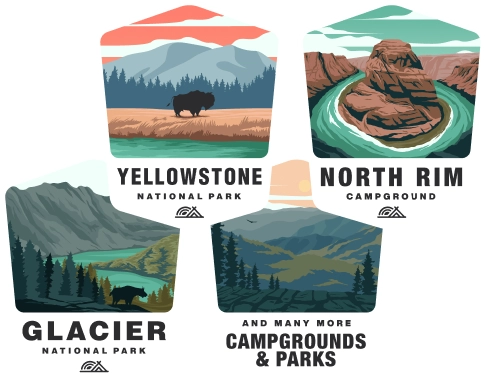Camping at Cibola National Forest and Grasslands
Overview of Cibola National Forest and Grasslands
Cibola National Forest and Grasslands cover a significant portion of New Mexico, western Texas, and Oklahoma. Established in 1985, it features a diverse landscape ranging from grasslands and prairies to mountainous terrain, providing habitat for a wide array of wildlife.
Permits and Reservations
Before you camp in Cibola National Forest and Grasslands, it's essential to know the permit requirements:
- Camping Permits: Certain areas within the forest may require a permit. Check with the local Ranger District for the area you plan to visit.
- Reservations: Many campgrounds can be reserved in advance through the National Recreation Reservation System. However, some sites are first-come-first-serve.
- Wilderness Passes: If your camping adventure takes you into designated Wilderness Areas, additional permits may be needed.
Camping Options
- Developed Campgrounds: These areas provide amenities like picnic tables, fire rings, restrooms, and sometimes even showers.
- Dispersed Camping: For a more remote experience, you can camp outside of developed campgrounds. This is allowed in many parts of the forest but comes with more regulations to preserve the wilderness experience and protect the environment.
- Group Campgrounds: Larger parties can avail of group campgrounds which must be reserved in advance.
Campfire Safety
- Fire Restrictions: Always check for fire restrictions or bans before lighting a campfire.
- Campfire Permits: In certain situations, a campfire permit may be required.
- Leave No Trace: Ensure that fires are completely extinguished before leaving the site.
Wildlife and Plants
The Cibola National Forest and Grasslands are home to diverse flora and fauna:
- Wildlife: Animals like black bears, elk, deer, and turkeys inhabit the area, and you should keep a safe distance and store food securely.
- Plants: From cacti in the lower elevations to aspens and pines at higher altitudes, the plant life is diverse. Be mindful of sensitive species and refrain from picking plants.
Recreational Activities
The Forest offers a variety of recreational opportunities:
- Hiking and Backpacking: There are numerous trails suited for different skill levels.
- Mountain Biking and Horseback Riding: Many trails are multi-use, accommodating both bikers and horseback riders.
- Fishing and Hunting: With appropriate licenses, these activities can be pursued during respective seasons.
Weather and Climate
The elevation across the forest ranges widely, so temperatures and weather conditions can vary:
- High Elevation Weather: Be prepared for cooler temperatures and sudden weather changes.
- Desert Climate: In lower elevations, expect hot and dry conditions during summer months.
Rules and Regulations
- Quiet Hours: Most campgrounds enforce quiet hours, usually between 10 p.m. and 6 a.m.
- Trash: Follow "Pack It In, Pack It Out" practices, as not all sites will have trash disposal facilities.
- Wilderness Regulations: Unique regulations apply in Wilderness Areas to preserve their natural state.
Access and Transportation
- Road Conditions: Roads can range from paved highways to rough forest roads that may require high-clearance or 4WD vehicles.
- Access for All: Some campgrounds are ADA accessible. Check the availability of such facilities if needed.
Important Contacts
Always have the contact information of the nearest Ranger District before heading out for camping, and check with them for the latest updates regarding conditions and restrictions. Emergency services should also be mapped out, especially if you are camping in more remote areas.

